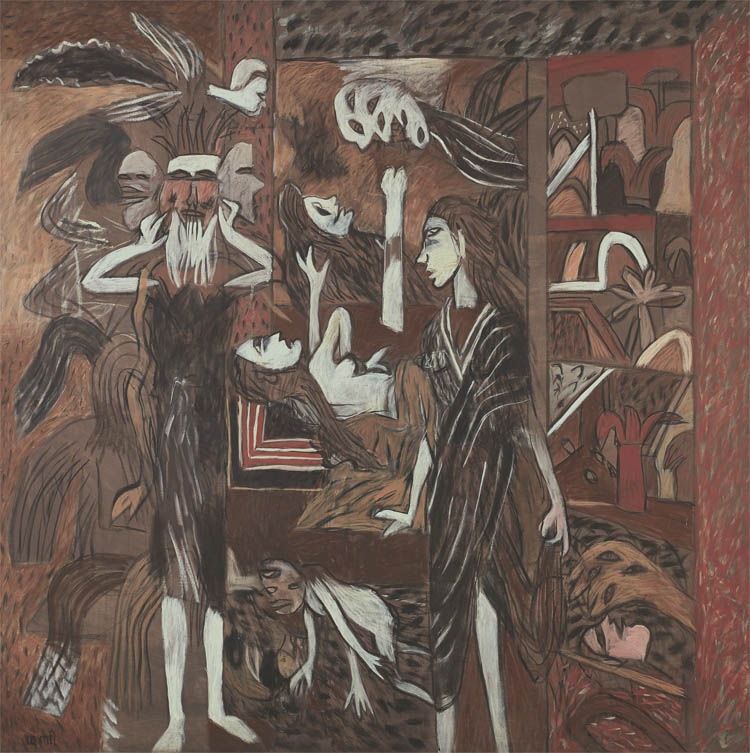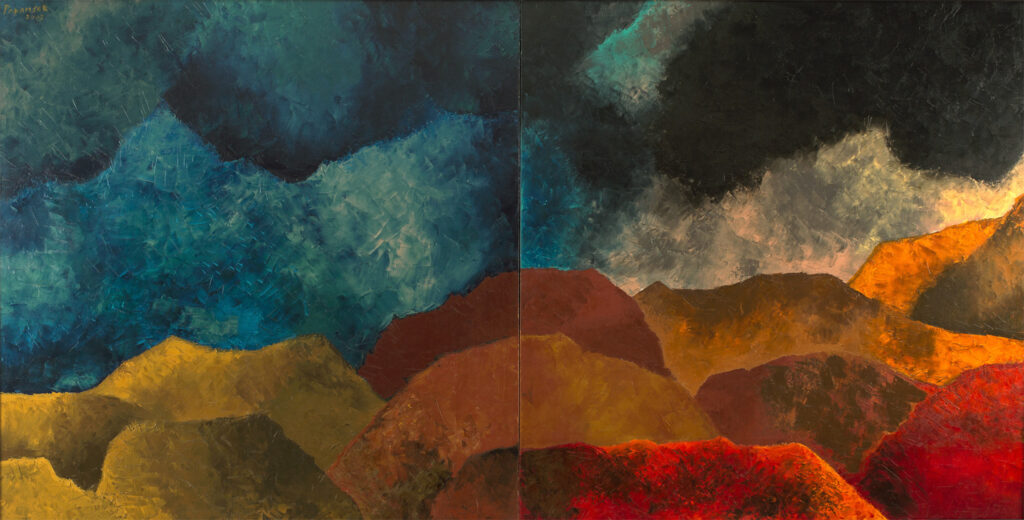
ARTIANA’s upcoming auction on October 13-17, 2016 features an important painting of K.G. Subramanyan – ‘The Visitor’. This iconic work of the artist has been exhibited in his retrospective and published in the book K.G. Subramanyan: A Retrospective, National Gallery of Modern Art, New Delhi, 2003.
The philosophical and mystic traditions of India are replete with stories and symbols. The ease and clarity with which these convey the deeper narratives and connotations intended from them appeal powerfully to the artistic eye. The number ‘three’ is very significant in the philosophical symbolism of the Shaiva and Advaita traditions. Shiva is considered to be the singular principle of all existence, the Brahman. He manifests Himself as the One Conciseness that illumines the three states of experience: the waking, dreaming and deep sleep states. He is also considered the pervader of all three worlds — heaven, earth and hell — and the ground on which the past, present, and future are conjoined to form the progression of time.
“In this painting, Subramanyan uses the colors of the earth, images of animal skins and the trees to create a dense visual field. The Visitor seems to refer to the iconography of Shiva who appears here with the three faces of a trimukha, a snake, suspended from his right shoulder. The fact that the face is rendered like a mask adds to the piquant quality of the painting. Shiva’s conventional seat, the hide of the spotted deer appears in different parts of the painting. This work is typical of Subramanyan’s involvement with myth, his ability to rework it for his own purposes. It also demonstrates what he calls the bahurupee or disguises in the play ‘mixing the normal with the hieratic’, the human with the mythic, the world of play and the imagination.” (Gayatri Sinha, Jiva – Life: Contemporary Indian Art, Bodhi Art Exhibition Catalogue, Singapore, 2004, p.46).





